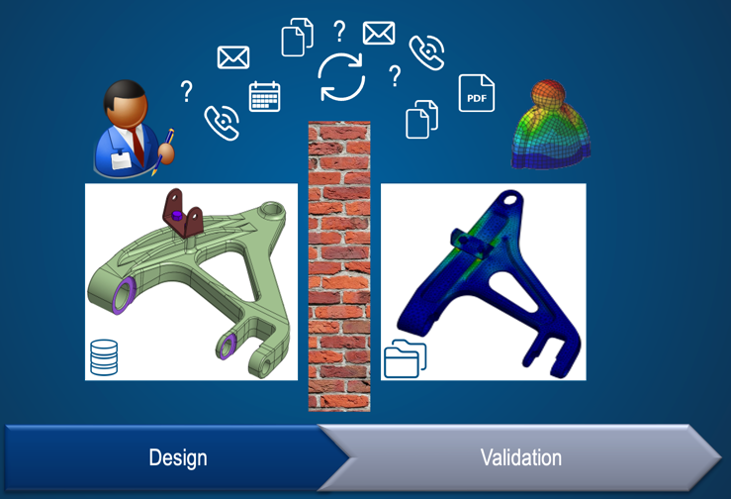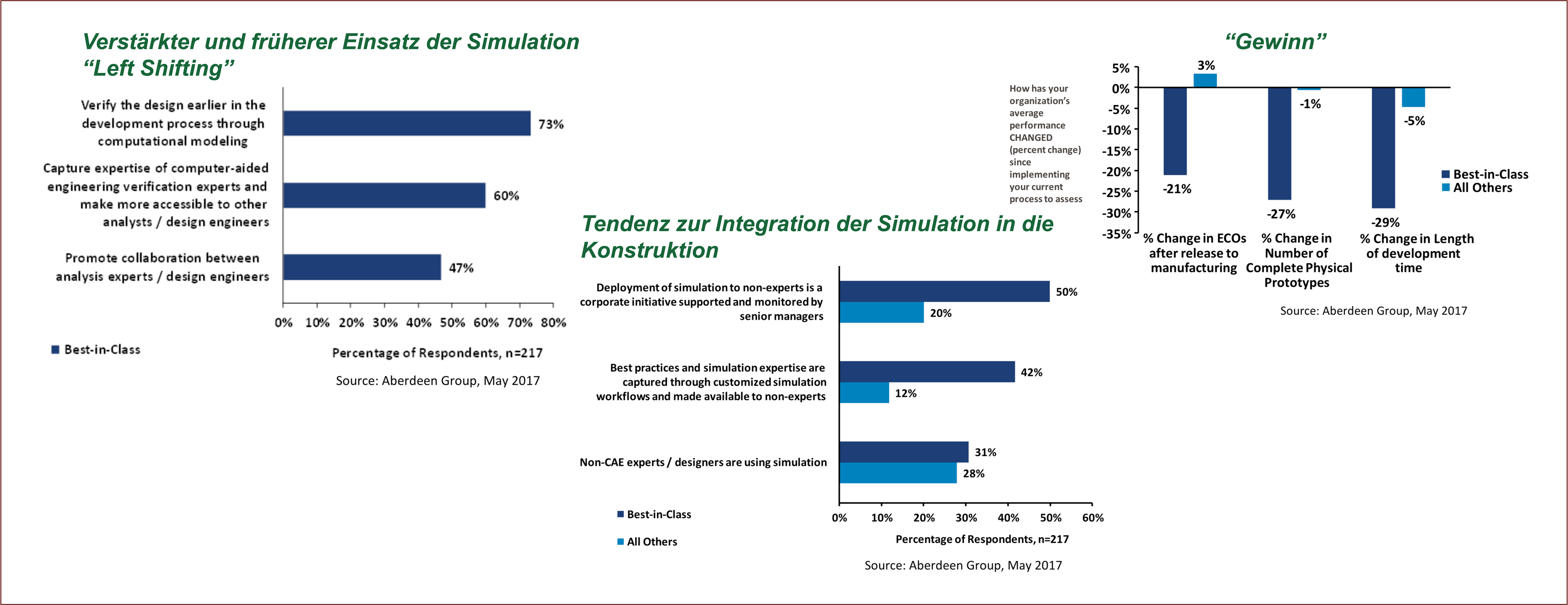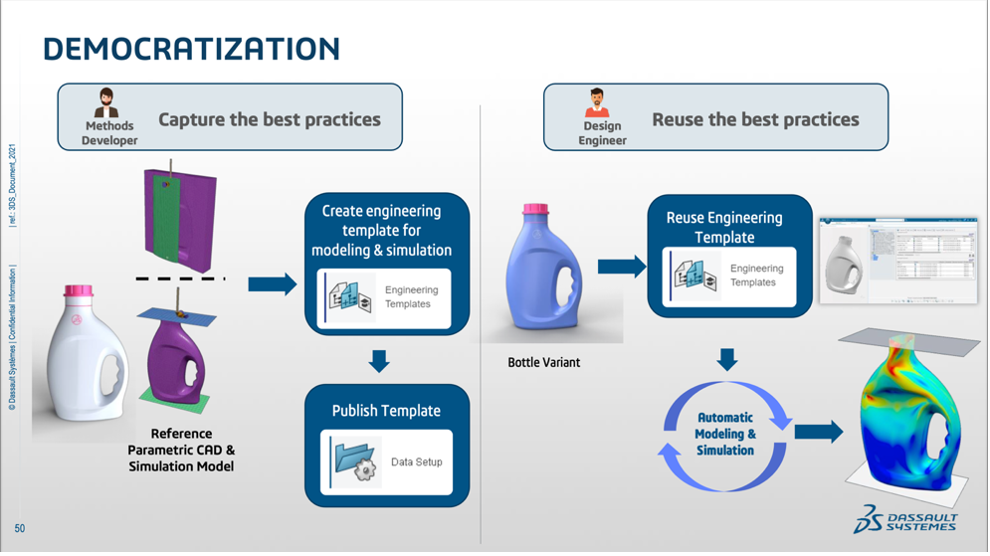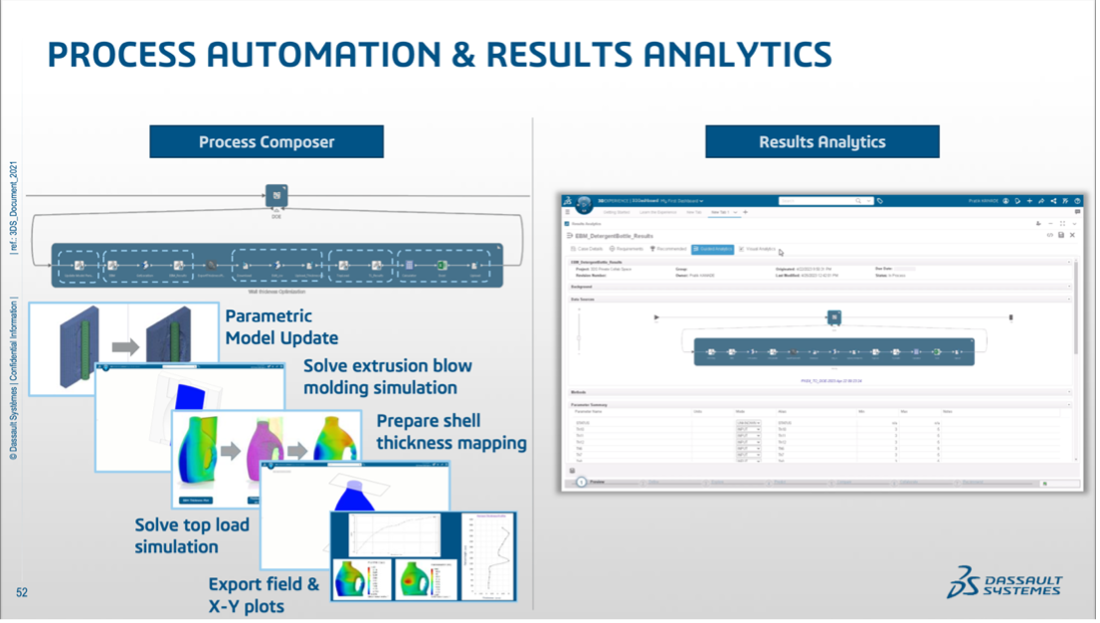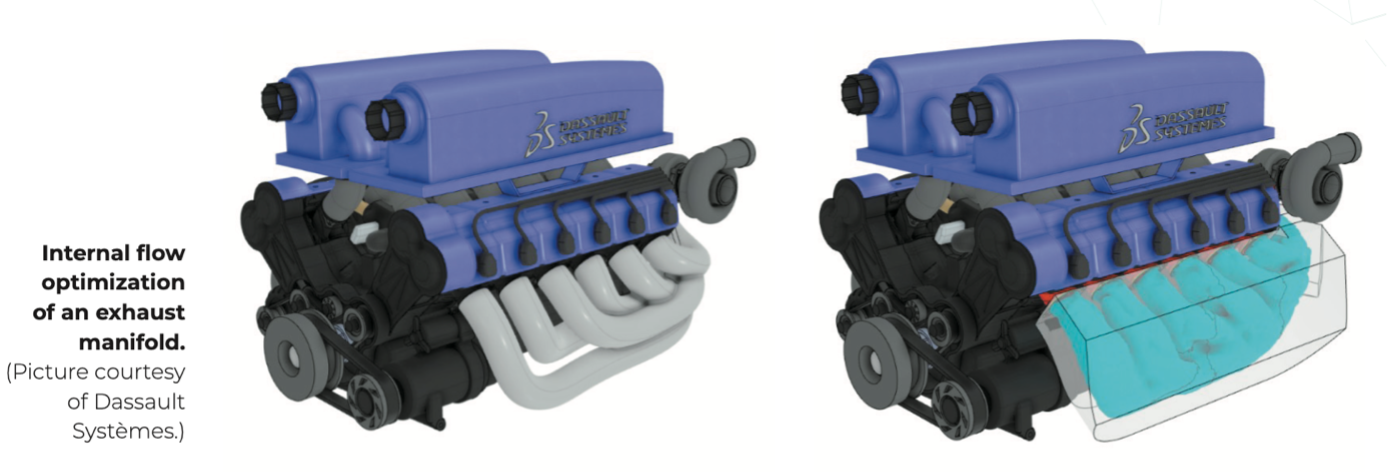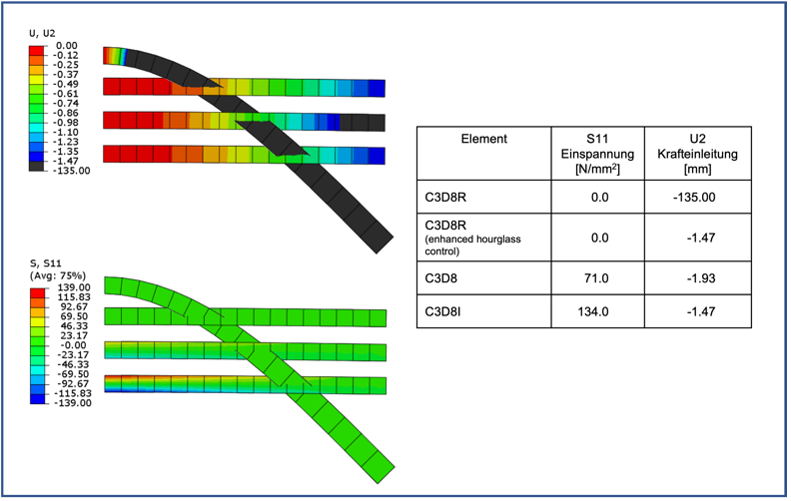The topic of the democratization of simulation has been in the literature, at conferences and on websites for several years. This is a further development of design-integrated simulation, which has been around since the 1980s. The designers should be able to independently carry out and evaluate non-linear, multi-physical simulations and implement the results in the design. Two very different approaches are being pursued here. One approach, based on NAFEMS definitions, favors guided processes, while the other strives for greater autonomy on the part of the designer. In this article, an extended abstract from K-TAG [13], both approaches are presented.
This paper assumes that simulation (e.g. of mechanics, fluid dynamics, electro-magnetism) is an essential and useful part of the product development process.
Many different terms can be found in the literature on the democratization of simulation, e.g:
- Democratization
- Design-integrated simulation
- Simulation-Driven Design
- CAD-integrated tools
- template-based customizations/apps
- designer-driven analysis
- Simulation-Based Design
- simulation-driven product development.
This almost always means that simulations are carried out directly by the designer. Design-integrated simulation has been around since the 1980s. Tools such as CATIA or SolidWorks have already integrated simulation for many years, see also [1] and [2]. Within SolidWorks, you also have access to a very powerful fluid simulation. Restrictions were often used in these solutions, such as
- Simplified component connections
- Linear material behavior
- Restriction to small movements and deformations
- Reduced control of the simulation.
In many cases, these restrictions required a differentiated approach by a calculation engineer. Collaboration between different departments for design and simulation is often described negatively in the literature today.
According to [3], it is important that the creative design process is not interrupted. In the past, this was done by waiting for tests or waiting for the simulation. In [4], the simulation department is described as a bottleneck in the development process. In [5], the sequential workflow of design-simulation-construction leads to ineffective development processes.
The term “working in silos” is often used. An internal Dassault Systemes document illustrates this work in silos (source: Dassault Systèmes internal document):
In recent years, the development of software systems for simulation has led to a significant improvement in simulation tools. The main points are:
- Improved geometry preparation
- Automatic meshing of even “bad” geometries
- Improved convergence behavior of the implicit solver
- Use of explicit solvers for static problems
- Use of automatic contact between components
- Elimination of interfaces for multi-physics applications.
In [4] the advantages of design-integrated simulation for the industry are presented on the basis of survey results. A distinction is made between innovative leading companies (best-in-class) and the “rest” (all others). Emphasis is placed on “left shifting”, an early verification and optimization of the product, on the left in the following image. Many companies are striving to switch to design-integrated simulation, centered in the following image. This enabled the companies to significantly reduce the costs and duration of the development processes, pictured right.
According to [3], the use of simulation in the design process is particularly important because the change from an experience-based to a knowledge-based decision must take place in the design. The advantages of a design-integrated simulation are presented in [6]. The demands on design processes have risen sharply in a more difficult environment. This is where design-integrated simulation is a problem solver.
In summary, many reasons are given for democratizing simulation and thus integrating simulation into design. Many of these reasons were already used many years ago to set up simulation departments. For example:
- Find the optimum design more quickly
- High innovation performance by considering many more possible solutions
- Previous design decisions
- Reduction of errors and interruptions
- Shortening development times
- Reduction of development costs.
For many simulation engineers, Nafems Ltd [7] is an important organization for their work. The following definition can be found in [8]:
“Democratization: A solution approach that allows people who are not simulation specialists to run simulations and obtain valid results within certain parameter ranges in a managed, traceable environment built by a simulation engineer who is accountable for the results obtained.”
A guided process is therefore proposed as a solution for democratization. A calculation engineer is responsible for this process. According to [9], in addition to this ‘template-based customizations/apps’ approach, there are also newer approaches that are intended to meet the following requirements:
- the software does not require any special knowledge
- Model setup and simulation run quickly
- High tolerance of ‘bad’ geometries
- The quality of the simulation is good.
A distinction can therefore be made between
- Guided simulation processes
- Newer/automated calculation processes.
We would like to present some examples of this below.
The product SimSolid from the company Altair is described in [10]. At the time of writing, this is a product for simulating linear and non-linear statics. The main advantages are emphasized:
- No geometry simplification by the user necessary
- No meshing by the user necessary
- Consideration of assemblies, connection technology and contact
- Results in seconds
In [9], various linear test cases (NAFEMS benchmarks) are calculated with the SimSolid software. There are only minor deviations from the reference solutions.
The ANSYS Discovery software is presented at [11]. Similar advantages are mentioned here, such as the elimination of geometry simplification and meshing. Assemblies, connection technology and contact can also be taken into account. In addition to structural mechanics, the solver also includes fluid mechanics, the calculation of heat transfer and coupled analyses. The execution of the simulation is referred to as “live”.
A detailed description of the use of Ansys Discovery can be found in [3]
Dassault Systèmes has invested a great deal in design-integrated simulation in recent years. The MODSIM approach from Dassault Systèmes is described in [12]. MODSIM is an integrated approach on the 3DEXPERIENCE platform to realize the democratization of simulation in the sense of the NAFEMS definition above. The advantages of more innovative products in shorter development times should thus be easy to realize.
However, these are not exclusively guided processes, as the tools provided can also be used without guidance. But then a lot more effort will have to be put in. The great advantage of the 3DEXPERIENCE platform lies in the integration of different disciplines such as CAD, CAE and CAM and the use of the same model (model-based engineering). In the context of this article, we will limit ourselves to a brief explanation. As part of MODSIM, the calculation engineer can record a best practice procedure as part of a template, bottom left image. This template is used by the designer to design the product, bottom right image.
The basis for the sequence of such templates is the Process Composer, which can also be used to define simulations that build on each other, bottom left image. It also makes it easier for the designer to analyze the results (bottom right).
Generative design for structural mechanics and fluid mechanics complements this idea. Here, the simulation processes for the best possible use of a given installation space are already fully integrated into the designer’s work, as shown below.
There are sufficient arguments in the literature for a significant strengthening of design-integrated simulation. The democratization of simulation leads to better products in shorter development processes.
Software manufacturers provide the necessary tools for this, whereby a distinction can be made between guided and automated calculation processes.
If you ask an experienced calculation engineer, there is a high probability that he will have strong reservations about this development.
On our website(Element selection and discretization) we have an article that deals with the correct choice of elements for a simulation. The linear load on a bending beam serves as an example. This shows that the wrong choice of element and discretization can lead to completely wrong results. In the following image, only the selection of one element, which is rarely used in practice, leads to the correct result.
In the literature on automated calculation processes, there are references to the use of reference memory (Reference Memory in [9]), the fidelity or the memory of the graphics card to increase the quality of the calculation [3]. This seems rather difficult, as no literature has yet been found that explains the dependence of the physics of a simulation on such variables in more detail.
The advantages of democratizing the simulation were described. In order to be able to utilize these advantages, the joint efforts of designers and calculation engineers are required.
Certainly applies:
- The simulation must offer added value in the product development process.
- The simulation should be capable of forecasting.
- “CATIATM V5 Portfolio – Dassault Systèmes® 3D Software ” [Online].
- Dassault Systèmes SOLIDWORKS, 2018, EXTENSIVE SIMULATIONS IMPROVE PRODUCT DEVELOPMENT, Dassault Systèmes.
- Brand, M., Baur, K., Brunner, S., and Gebhardt, C., 2020, Physik begreifen – besser konstruieren, Springer Berlin Heidelberg, Berlin, Heidelberg.
- Cline, G., 2017, THE BENEFITS OF SIMULATION-DRIVEN DESIGN, ABERDEEN GROUP.
- Karlsson, L., Pahkamaa, A., Karlberg, M., Löfstrand, M., Goldak, J., and Pavasson, J., 2011, “Mechanics of Materials and Structures: A Simulation-Driven Design Approach,” J. Mech. Mater. Struct, 6(1-4), pp. 277-301.
- Jackson, C., The Four Benefits of Simulation-Driven Design, Lifecycle Insights.
- Nafems Ltd, “NAFEMS Engineering Modeling, Analysis, Simulation Community,” NAFEMS [Online].
- “NAFEMS – Glossary Terms D-I” [Online].
- Symington, I., 2020, “Designer Oriented Software – Is It Accurtae? Part 1,” NAFEMS Benchmark Magazine, (January 2020).
- “Structural analysis for fast design iterations | Altair SimSolid“
- “Ansys Discovery | 3D Product Simulation Software” [Online]
- Popielas, F., 2022, “Introduction TO MODSIM.”
- Bayreuth 3D Designers’ Day
